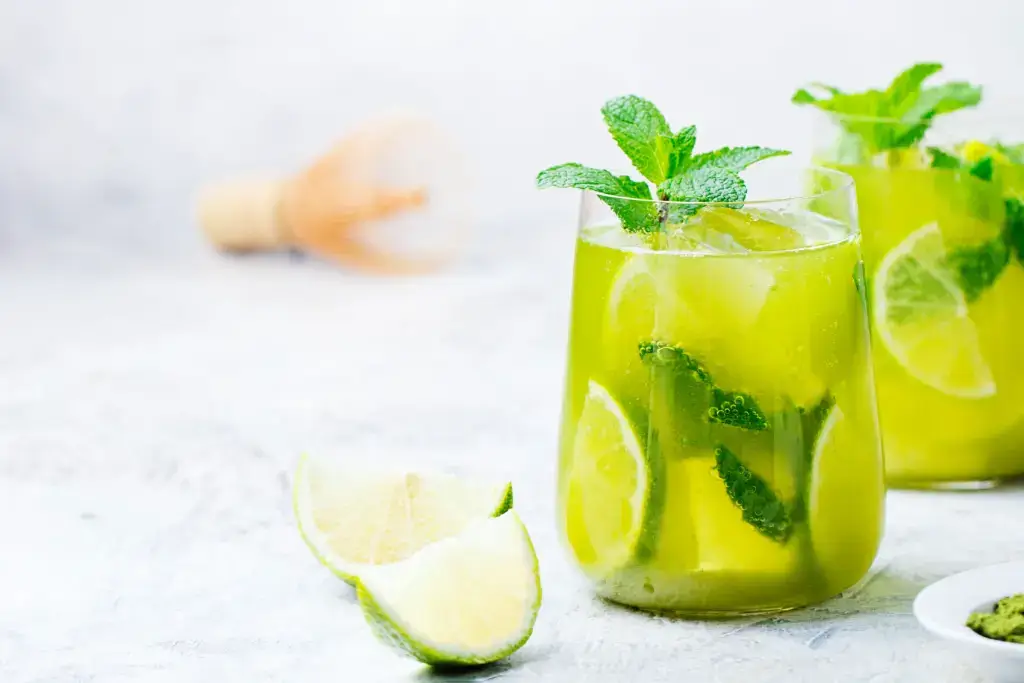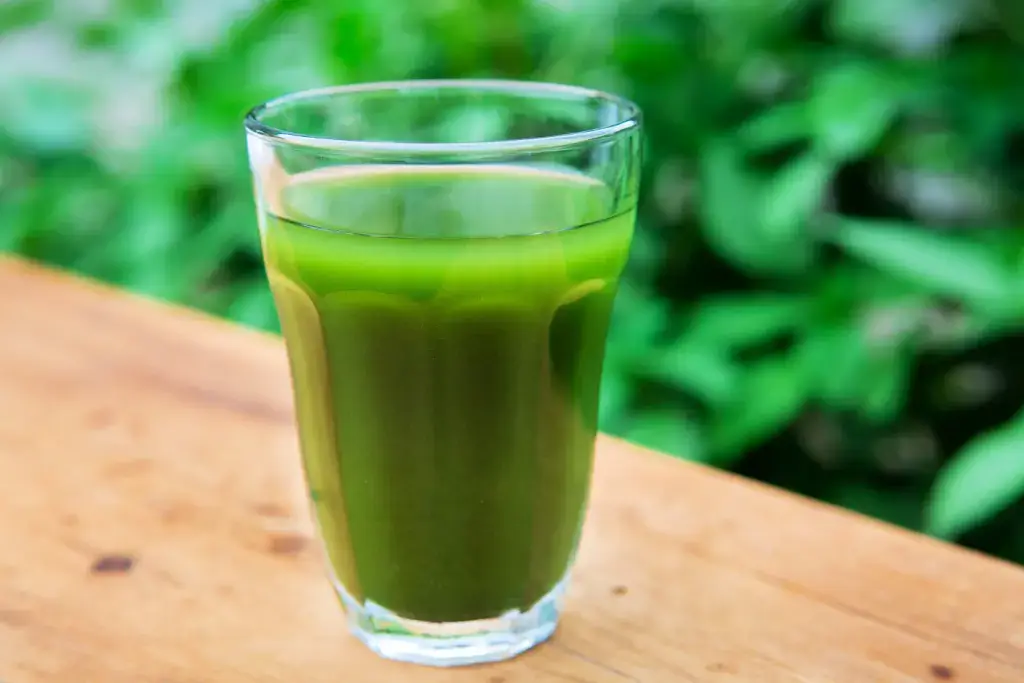japanese drinks
Japanese Drinks: Five Great Beverages to Try!

Thalia Harris
Posted on June 06, 2024
Share:

When the summer heat strikes, you can satiate your thirst with Japan’s amazing array of unique beverages! From sweet amazake to earthy aojiru, these traditional Japanese drinks offer an entirely different world of refreshment.
Amazake
People have been making amazake, a sweet and thick Japanese drink, from fermented rice for a very long time, since at least the 8th century! People cook rice and mix it with a koji mold to create amazake. This koji mold breaks down the rice starch into sugars, giving it a sweet taste. There are two main kinds: people make one from fermented rice and koji and the other from the leftovers from sake (Japanese rice wine) production.

The drink looks like a milky white porridge with little bits of floating rice. It tastes sweet but also a little tangy, reminding people of yogurt. Amazake packs in good stuff like vitamins, fiber, and protein, which is why some people in Japan call it a “drinkable IV”! In Japan, people also serve amazake hot or cold at temples and shrines, especially during unique festivals like New Year’s and Girl’s Day. People also use amazake as a natural sweetener in desserts, dressings, and smoothies.
Aloe Drink
Aloe drinks are a popular and refreshing beverage from Okinawa, Japan’s southernmost prefecture. Okinawa is famous for its tropical fruits and aloe vera production. Aloe drinks contain pulp and juice extracted directly from the aloe vera plant in Okinawa. Generally, they have a clean, fresh taste, and plenty of aloe pulp gives them a unique texture.

A popular variety combines aloe with shikuwasa, a flavorful green citrus fruit from Okinawa. The shikuwasa adds a tangy, slightly sour kick to the aloe drink, marketed as a healthy beverage rich in vitamins and minerals.
Nihonshu
Brewers make Nihonshu, a rice wine, by fermenting rice. First, they polish off the outer layers of the rice grains, leaving just the starchy white centers. Then, they cook the rice with steam, mix it with a particular mold called koji, and ferment it with a unique Japanese yeast. The amount of polishing and alcohol content determines the different types of nihonshu. Brewers make junmai, a premium sake, only from rice, while they add a little bit of brewer’s alcohol to honjozo and ginjo. They consider daiginjo, made from rice polished down to half its size or less, the highest quality.

Depending on the type, this drink can taste light and fruity or rich and full-bodied. Thanks to the koji mold, the flavors can range from fruity and floral to herbal and nutty. Additionally, the aromas can remind you of everything from bananas to mushrooms!
The serving temperature is critical. People usually chill premium ginjo, while they can gently warm other nihonshu styles to bring out more aromas and flavors. They traditionally sip nihonshu from small ceramic cups called ochoko. Besides drinking it, cooks also use nihonshu for cooking – in marinades, sauces, and desserts. It plays a big part in Japanese ceremonies like weddings and festivals. Some sake breweries have been making it for hundreds of years!
Are you looking for some great snacks to pair with traditional Japanese drinks this summer? Check out Sakuraco! Sakuraco delivers traditional Japanese snacks, teas, sweets, and snacks from local Japanese makers directly to your door so you can enjoy the latest treats from Japan!
Aojiru
Aojiru is a popular green juice drink in Japan. It’s made by extracting the juices of nutrient-packed green veggies like kale, barley, and ashitaba leaves and drying them into a powder. People in Japan have been drinking aojiru for hundreds of years, maybe even back to the 700s! The name “aojiru” literally means “green juice” because of its bright green color, which comes from all the veggie extracts.

Aojiru is a total powerhouse regarding vitamins, minerals, fiber, and other good-for-you plant nutrients from green vegetables. Many believe drinking aojiru regularly can give you antioxidants, boost your immune system, help with digestion, and make you feel healthier overall.
You can buy aojiru as a powder mixed with water, milk, or juice. Some major brands are Kin no Aojiru, which tastes like matcha green tea, and Karada ni Euglena made with nutrient-rich algae from Okinawa. Convenience stores also sell ready-to-drink aojiru bottles. The taste can be pretty green and earthy, so many people get creative by blending aojiru into smoothies yogurt or mixing it with fruit juices to make it taste better.
Sakurayu
Sakurayu is a traditional Japanese beverage made by steeping salted cherry blossoms in hot water. People have enjoyed it in Japan for centuries, with its origins dating back to the Edo Period (1603-1868). During the cherry blossom (sakura) viewing season, the delicate pink blossoms would be lightly salted and preserved to make this fragrant tea-like drink.

To prepare sakurayu, salted cherry blossom petals are placed in a teapot or kyusu and covered with hot water to steep for a few minutes. This allows the floral aroma and light saltiness to infuse into the water. The steeped blossoms are then typically removed before serving. Sakurayu has a pale pink hue from the cherry blossom pigments and a subtly salty, delicate floral flavor reminiscent of cherry blossoms.
Traditionally, people drink sakurayu instead of green tea at cherry blossom viewing parties (hanami) or festive occasions like weddings. Overall, sakurayu has a delicate floral essence because it has cultural ties to the beloved sakura cherry blossoms. Sakurayu remains a treasured springtime beverage in Japan. It allows people to drink in the fleeting beauty of the cherry blossom season.
Otoso
Otoso is a really cool traditional Japanese drink made by steeping dried roots, herbs, and plants in hot water. Japanese people have been drinking otoso for centuries because of their long history of using plants and herbs for medicine. The otoso blend usually contains burdock root, cnidium rhizome (a plant root), immature orange peel, and other beneficial botanicals.

To make otoso, you simmer dried roots, herbs, and plants in water to extract their flavors and beneficial compounds. The result is a dark brown liquid that tastes earthy and bitter. In Japanese culture, otoso is a nourishing, restorative tonic that supports overall health and well-being. Many people drink it during the cold winter when they might be more likely to get sick.
But beyond just its potential medicinal benefits, otoso is also special because it can gently warm you up from the inside when you sip the piping hot beverage on chilly days. Ahhh, so cozy! While not as common as green tea, otoso can still be found at some traditional Japanese inns, restaurants, and herbal shops, especially in winter. Pre-made powder mixes are also available, so you can easily brew it at home.
Why should I try these Japanese drinks this summer?
Japanese drinks are a refreshing change from typical summer beverages, with flavors you can’t find anywhere else. The variety of Japanese drinks is vast – from veggie juices full of nutrients to fermented milk drinks that can help digestion. This means there’s something for everyone’s taste buds, whether you want something fruity, creamy, or tangy. So, by exploring the world of Japanese drinks this summer, you can discover new, unique flavors you can’t find anywhere else. Have you ever had one of these drinks before? Let us know in the comments below!

Discover authentic flavors with Sakuraco
Get Sakuraco 

Discover authentic flavors with Sakuraco
Get Sakuraco 
Related Articles

Aaron and Claire Show Us How to Make Gyudon!
If you’re looking for a Japanese comfort food that’s quick, affordable, and full of flavor, Aaron and Claire have a great option. In this video, Aaron shows how to make Gyudon using ground beef instead of the usual thinly sliced beef.

Tonkatsu Luxury Restaurants: Best Ones to Try!
Don’t miss out on tonkatsu if you’re traveling to Japan! Tourists often add the meal to their must-eat list because of its delicious and satisfying nature. Even better, you can elevate the experience by going to luxury restaurants across Japan, where you can experience some of the most celebrated pork cutlets.

Mochi: How is Mochitsuki Made in Japan?
Mochitsuki is the Japanese tradition of pounding steamed rice to make mochi for the New Year. Families and neighbors gather to participate in this lively and meaningful tradition. The teamwork involved helps everyone feel a sense of connection.

Konpeito Candy: What Makes This Starry Treat Shine?
If you are a fan of the famous Demon Slayer series, then you probably know that the favorite treat of the adorable Nezuko Kamado is those tiny, colorful little sweets.



